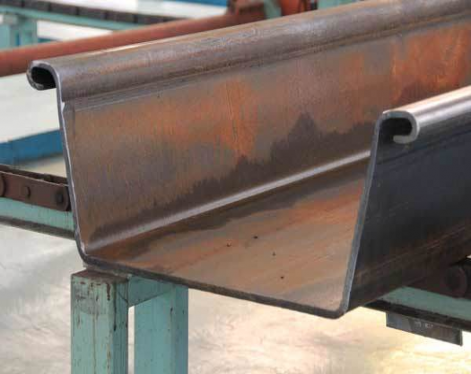Folds and internal cracks in medium and low pressure boiler tubes are the most common forms of defects. Internal folds and internal cracks may be distributed along the entire length of the steel pipe, or located only at both ends or part of the length. When rolling alloy steel pipes, inward folding is particularly easy to occur, and rolling general carbon steel pipes sometimes occur. There may be the following reasons for the formation of infold defects:
3.Inward folding caused by poor centering hole is called centering inward folding. The centering inward fold occurs at the front end of the medium and low pressure boiler tube capillary.
4.Due to the abrasion and surface melting of the piercer's top head, the inner wall of the capillary tube sticks to metal and causes inward folding.
5.Internal cracks are generated due to uneven deformation of the piercing and rolling section, or the internal cracks continue to be processed to be internally folded in the middle and low pressure boiler tube.
The distribution shape of the middle and low pressure boiler tube folded on the inner wall is mostly spiral, semi-spiral or irregularly distributed zigzag. The regularity of internal cracks is generally not strong, which is determined by the characteristics of piercing deformation and kinematics, but according to the piercing elongation coefficient and torsion deformation, as well as the reprocessing of subsequent processes (such as tube rolling, sizing and reducing, cold rolling and cold rolling) Pulling, etc.), the distribution of defects in the medium and low pressure boiler steel pipes may change, such as straight lines. Three-roll piercing machines, guide plate piercing machines, and bacterial piercing machines are generally not easy to form infold defects, but three-roll piercing machines sometimes have ring-shaped high-level defects.
1.Due to the formation of cavities, factors that directly or indirectly affect the premature formation of cavities will cause inward folding defects. These factors include raw material quality, medium and low pressure boiler tube steel grade and processing performance, heating system, perforation deformation system, rolling mill adjustment, tool design and wear conditions, etc. Inward folding defects may be caused by poor quality of raw materials, such as large center looseness, accumulation of non-metallic inclusions, insufficient compression ratio and residual casting structure, which will reduce the plasticity of the metal and easily cause the center of the middle and low pressure boiler tube blank. (Cavity), while forming defects such as inward folding.
2.Inward folding defects may also be caused by the perforation conditions, such as excessive compression in front of the top (or compression belt), and a cavity is formed in front of the top. The way to overcome it is to appropriately reduce the amount of compression and increase the amount of extension of the plug; but too much reduction of the front compression of the plug will make the secondary bite worse, increase the axial slip, and increase the number of compressions, and cavities may also appear. Especially at the front end of the tube. In addition, the factors that reduce the coefficient of friction will cause the axial slip to increase, and thus all contribute to the inward folding, such as the working surface of the roll is polished, and the oxide scale with low friction coefficient is formed on the surface of the low and medium pressure boiler tube billet. Finally, excessive ovality, head wear, increased axial resistance, etc. are all factors that promote the formation of cavities. Defects on the inner surface of medium and low pressure boiler tubes may also be caused by heating conditions. For example, overheating of steel, severe uneven heating, or too low temperature will lead to deterioration of metal perforation performance and easily cause inward folds and cracks. The inward folding defect is also related to the incorrect adjustment of the rolling mill, because the good piercing system is destroyed at this time.
3.Inward folding caused by poor centering hole is called centering inward folding. The centering inward fold occurs at the front end of the medium and low pressure boiler tube capillary.
4.Due to the abrasion and surface melting of the piercer's top head, the inner wall of the capillary tube sticks to metal and causes inward folding.
5.Internal cracks are generated due to uneven deformation of the piercing and rolling section, or the internal cracks continue to be processed to be internally folded in the middle and low pressure boiler tube.
The distribution shape of the middle and low pressure boiler tube folded on the inner wall is mostly spiral, semi-spiral or irregularly distributed zigzag. The regularity of internal cracks is generally not strong, which is determined by the characteristics of piercing deformation and kinematics, but according to the piercing elongation coefficient and torsion deformation, as well as the reprocessing of subsequent processes (such as tube rolling, sizing and reducing, cold rolling and cold rolling) Pulling, etc.), the distribution of defects in the medium and low pressure boiler steel pipes may change, such as straight lines. Three-roll piercing machines, guide plate piercing machines, and bacterial piercing machines are generally not easy to form infold defects, but three-roll piercing machines sometimes have ring-shaped high-level defects.









